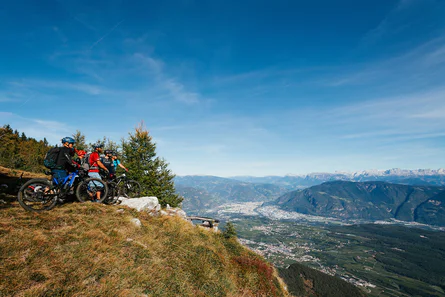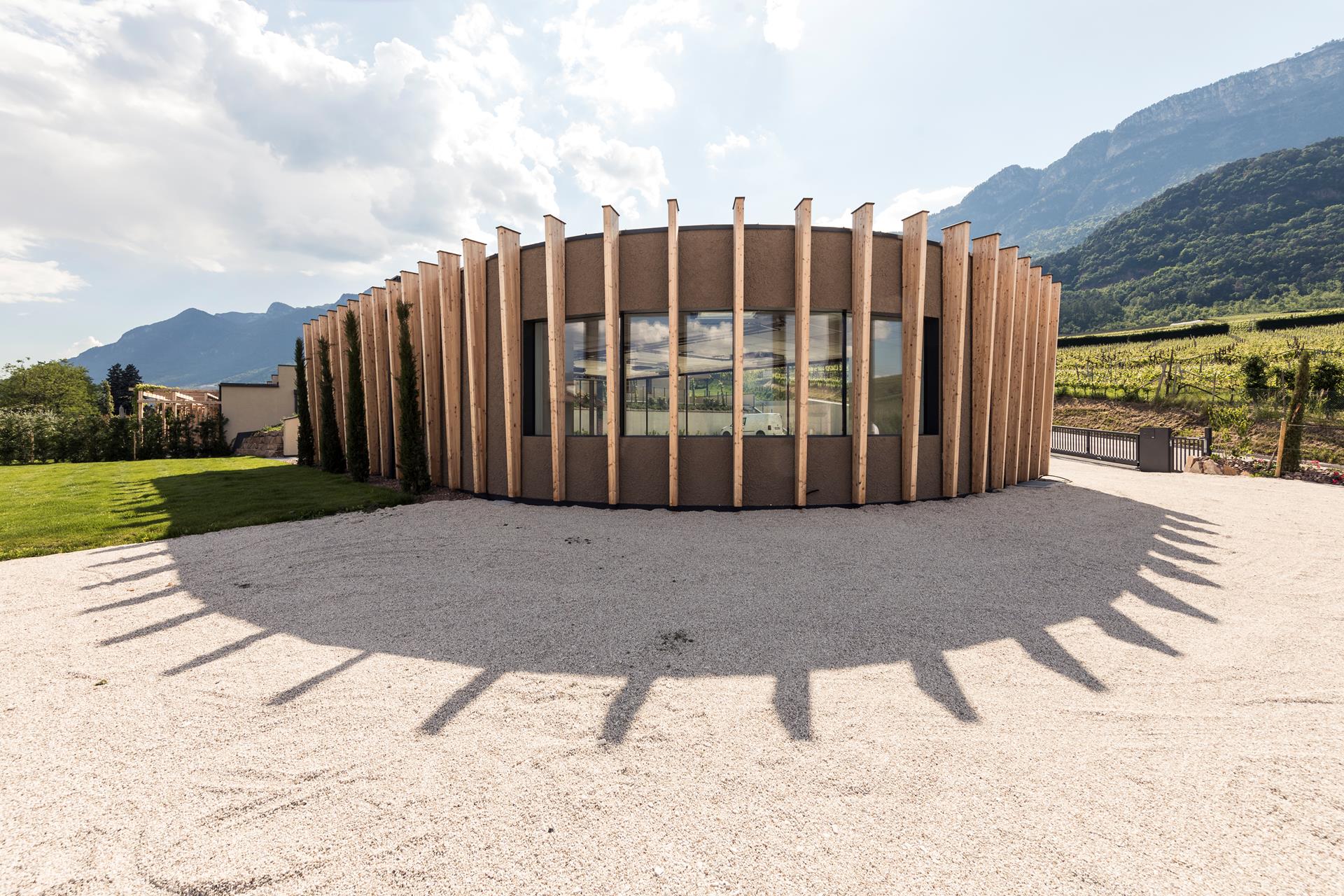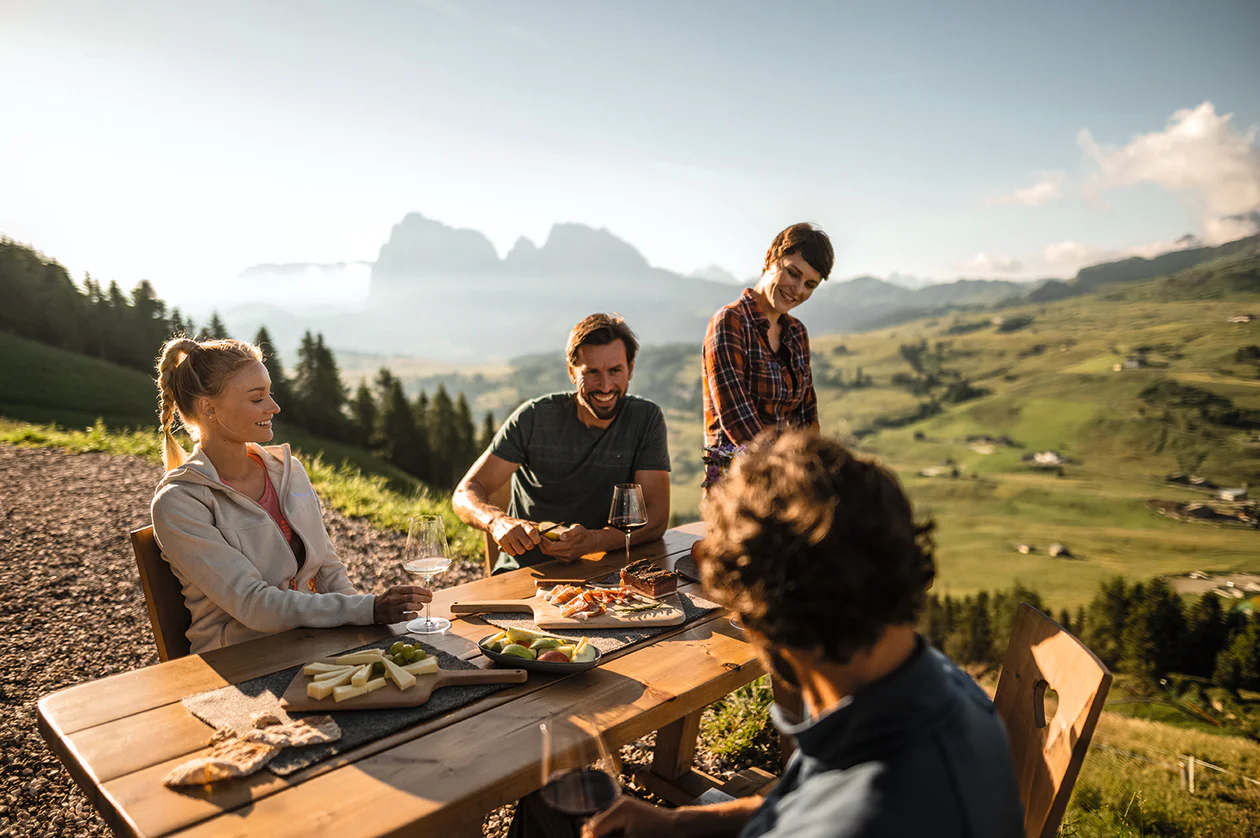On the western side of the Etsch / Adige Valley, the glaciers from the last Ice Age left an almost vertical cliff up to 600 meters in height demarcated in the north by the Gantkofel / Monte Macaion and in the south by the Monte Roen. In the middle, there's the Penegal, with its transmission station visible from afar. The only suitable trail for cyclists from Kaltern / Caldaro to this summit takes about an hour, and is via the Mendel Pass Road. This route displays an average grade of only six to eight percent, thus allowing cyclists to adopt a nice, regular rhythm. However, if you want, you have the choice of instead taking the convenient Mendel / Mendola funicular. Once you've gotten to the pass, you'll still have to overcome the narrow, low-traffic road up to the summit – that'll take about half an hour. But then you're in for a handsome reward: A terrific panorama of Lake Caldaro and the entire "South of South Tyrol!" Now comes the challenging descent to Bait del Prinz. Some stretches of Trail No. 500 are bumpy, rocky, with roots growing across it; the trail leads mostly downhill, but there are also several short, exciting ascents. Once you've reached the Prinz Hut, you'll turn into a gravel trail veering downhill to the left and taking you to the Regole di Malosco – an alpine hut with a bill of fare boasting a variety of delicious Trentino specialties. Then proceed uphill for a bit along the gravel trail and then downhill to the Hotel Paradiso. From there, you should then take the road uphill to the Mendel Pass. After a short descent to the road, you'll turn into the New Mendel Ascent which has been especially established for cyclists. This trail is a relatively broad gravel forest path suitable for cyclists of all levels. It includes a couple of winding segments that will take you to the Boos Forest Road. At the bottom of the Forest Road, you can take the Hohl Trail (which has now been widened somewhat) which will lead you downhill to the edge of Kaltern / Caldaro – another highlight for bikers wishing to test their technical mettle. At this point, you can decide if you want to take the very beautiful trails and gravel paths of the detour via the Kaltern sports grounds and the Kardatsch Hiking Trail, all the way down to Lake Caldaro. From here, you will still have to manage another 180 meters of altitude differential back to the starting-point, but this descent is still quite rewarding. The trails down to the lake have a perfect "flow" and are not difficult to manage. All in all, the tour to the summit of the mighty Penegal represents a real highlight for cyclists with a good level of fitness, and boasts a heavenly panorama. The comfortable flow trail does not require a high technical level.
Variants: The tour can be combined with the Malga Romeno tour.
Mustn't be missed: The transmission station on the Penegal, the "Regole di Malosco" alpine hut, the fabulous panorama of Kaltern and Lake Caldaro, the "Unterland" district of South Tyrol, the Dolomites, and the mountains of the Non Valley.









































